The most recent oil spill on the Santa Barbara coast that has decimated wildlife and soiled California beaches with tar over a 350-mile area has been an unmitigated disaster. It illustrates weaknesses in basic safety measures for pipelines and crude by rail, as well as risks associated with industry plans to expand tar sands and other extreme drilling infrastructure on the West Coast.
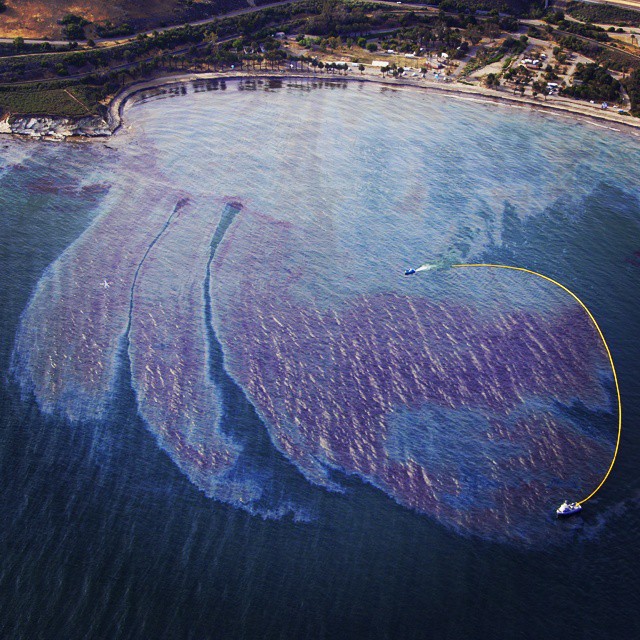

Santa Barbara pipeline spill highlights threats of tar sands expansion into the West Coast
By Anthony Swift, Published By the Natural Resources Defense Council
The most recent oil spill in California highlights both fundamental weaknesses in basic safeguards for our nation’s oil infrastructure as well as risks associated with industry plans to expand tar sands infrastructure in the West Coast.
On May 19, a pipeline owned by Plains All American ruptured, soiling more than 4 miles of California’s coast and marine waters with 105,000 gallons of crude oil. This isn’t the first time in recent memory that California has been subject to a major spill from PAA’s pipeline system – in May 2014 the company’s West Coast pipeline spilled more than 10,000 gallons into the streets of Los Angeles.
This spill in Santa Barbara uncovers the gap between industry’s rhetoric and reality, revealing risks associated with oil transportation infrastructure, the poor record of leak detection technology, and the inadequacy of spill response. Moreover, this incident demonstrates the real risks associated with industry plans to inundate California’s coastal waters, pipelines, rail lines and refineries with tar sands crudes.
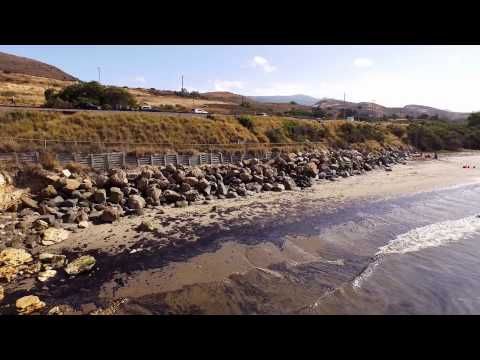
Watch this video on YouTube
Destruction of the Gaviota Coast. Video by Nich Phillips
Since May 19, nine dead dolphins — some with mouths full of tar — have washed onto South Coast beaches. A total of 45 mammals and 80 birds have been found dead in the last two weeks. … The true environmental impact to the region’s intertidal ecosystem — a delicate and narrow piece of the natural world where land and water meet — will be vast and long lasting, local marine biologists have said. — Santa Barbara Independent
STORY: Crude By Rail: California Communities Fight Toxic Tar Sands
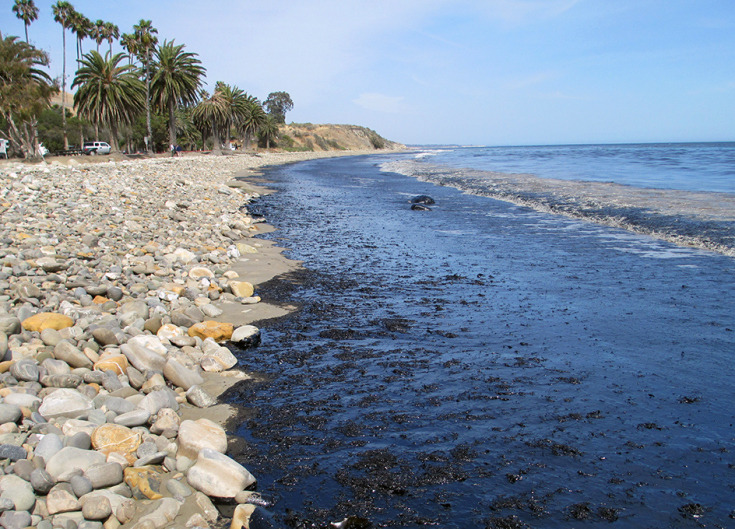

The 11-mile Plains American Coastal Pipeline connects Exxon’s Las Flores Canyon facility – which provides basic processing for crude produced from California’s Outer Continental Shelf (OCS) – to Plain’s larger Line 63 pipeline system.
- Leak detection. Once again, the pipeline operator’s leak detection system appears to have missed this spill, as a member of the public called in the spill around noon after smelling the petroleum fumes. This again highlights the sad secret when it comes to the state of pipeline leak detection – systems miss 19 out of 20 spills. Perhaps most surprisingly, leak detection systems miss 4 out of 5 spills larger than 40,000 gallons. Federal regulators at the Pipeline and Hazardous Materials Safety Administration (PHMSA) are aware of the problem – they published a report in late 2012 highlighting failures in both industry practices, technical and federal regulations in detail – but little has been done to address it. Even so, industry often touts its technology and many in the public are under the impression that it is able to detect even the smallest leaks. That’s simply not true.
- Spill response. While the public reported the spill at noon, the pipeline was not shut down until around 3 p.m., according to the Los Angeles Times. Meanwhile, the ruptured pipeline was sending crude oil into the Pacific Ocean. While this delay is certainly unacceptable, it is not unprecedented. When Enbridge’s pipeline spilled 830,000 gallons of tar sands into Michigan’s Kalamazoo River, it took the company 12 hours to shut the pipeline down.
- Clean-up efforts. Unfortunately, little progress has been made in terms of spill response measures and technology – the tools available to spill responders today haven’t changed for decades. Weaknesses in marine oil spill response plans and techniques occur against a backdrop of proposals to increase crude oil produced from and moved through ocean waters. This problem will only be compounded as industry works to increase the transport of tar sands oil in marine waterways – as tar sands bitumen is heavier than water, evading conventional spill response measures that rely on oil to float. Five years after a tar sands spill in Michigan confounded spill responders – after more than $1 billion in clean-up activities, nearly 40 miles of the river is still contaminated – no improvements have been made in tar sands spill response measures.
Since May 27th, 2015 oil globs have been found along southern California (concentrated near Ventura, Manhattan Beach, Redondo Beach, Hermosa Beach, Santa Monica, Malibu, Zuma Beach and Venice Beach). An Official from the state informed us they have received reports of oil from Morro Bay down to Imperial Beach, San Diego. Point of reference: That’s about a 350-mile stretch of coastline. — Surfrider
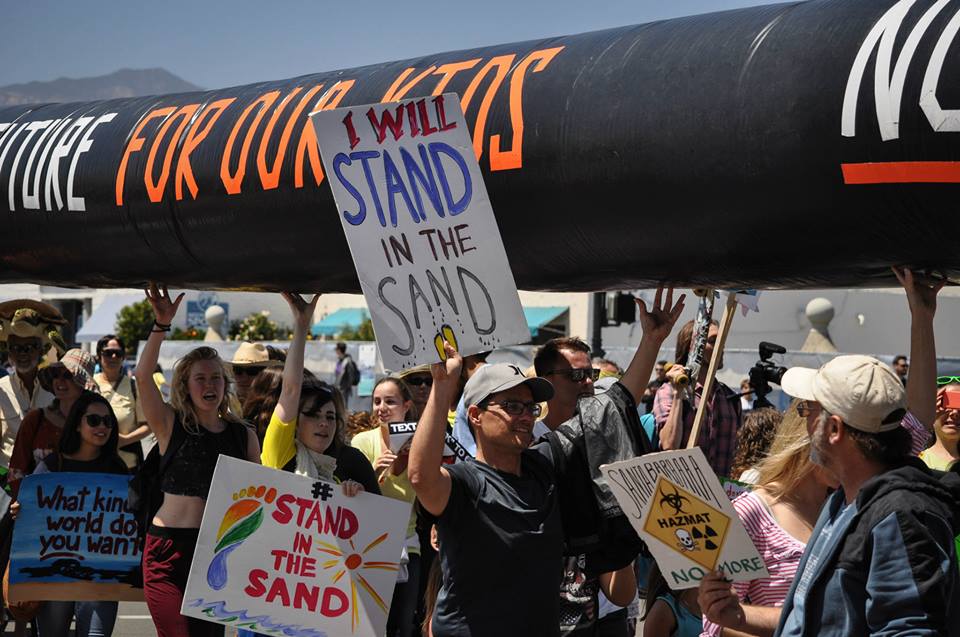

This pipeline accident and marine oil spill only highlights the threat of industry’s plans to dramatically increase the volumes of tar sands destined for California. As NRDC detailed in a report released last month, the tar sands industry is seeking to increase tar sands shipments into California from 50,0000 barrels per day (bpd) to more than 650,000 bpd. This tar sands crude would finds its way to California’s refineries using both new and existing transportation infrastructure – including the Plains All American pipeline system.
- Threats to California’s marine waters. The report highlights plans by the tar sands industry to increase tanker and barge traffic 25-fold, from 80 to more than 2,000 vessels, moving along the Pacific west coast. A large portion of these will be headed to California, putting California’s coastal waters at risks from tar sands spills due to barge or tanker accidents. Tar sands oil spills pose an even greater challenge to clean-up efforts, particularly in water bodies.
- Threats to California’s pipelines. Much of this tar sands would be transported to California’s refineries via pipelines like Plains All American Line 63, which ships crude both from offshore sources and California’s interior to the state’s refineries. Moreover, Plains is increasingly integrating its pipeline system to handle crude by rail. While this is currently primarily light crude, like many industry participants, Plains All American is anticipating increasing volumes of heavy tar sands moving onto its system in the future.
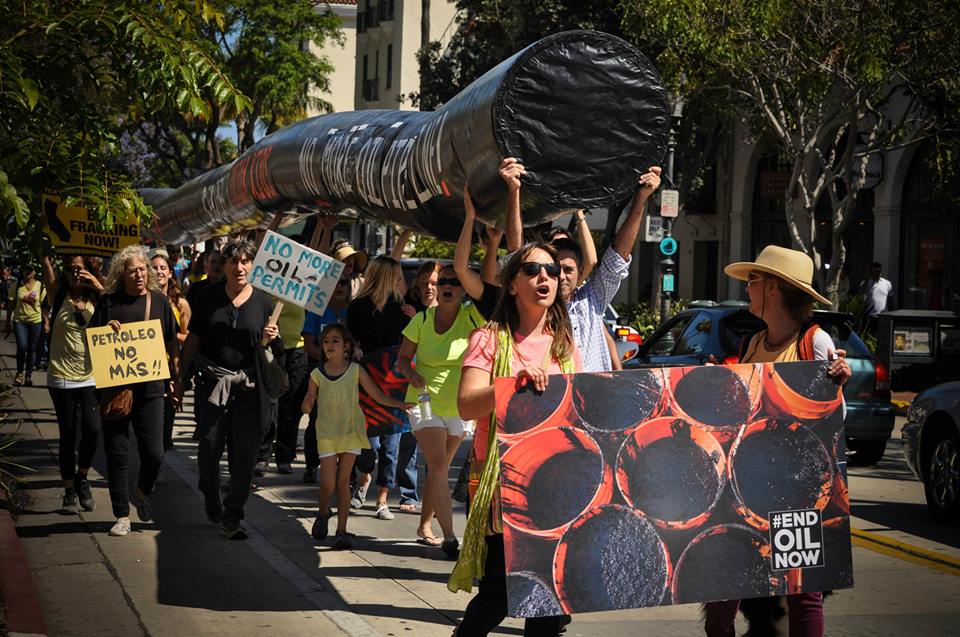

The tragic oil spill into California’s coastal waters is yet another example of the many costs of our current dependence on crude oil. There is a better path forward.
We need stronger safeguard to ensure the safety of our existing infrastructure. We also need to pursue policies to reduce oil consumption, prevent the expansion of high-carbon and environmentally damaging sources of oil like tar sands and spur low-carbon transportation such as electric vehicles. Through both opposition to tar sands infrastructure and support for regional clean energy policies, we can prevent the influx of tar sands crude and build the green infrastructure and public support necessary to begin transitioning to a clean energy economy.
And if you live in California, please sign this petition asking Governor Brown to support current legislation that would close a loophole to allow new oil drilling off California.




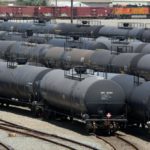








Pingback: Tar Sands Oil "Bomb" Trains Proposed for California | WilderUtopia.com
Pingback: Deadly Waters – Oil Spills & The Future of Offshore Drilling